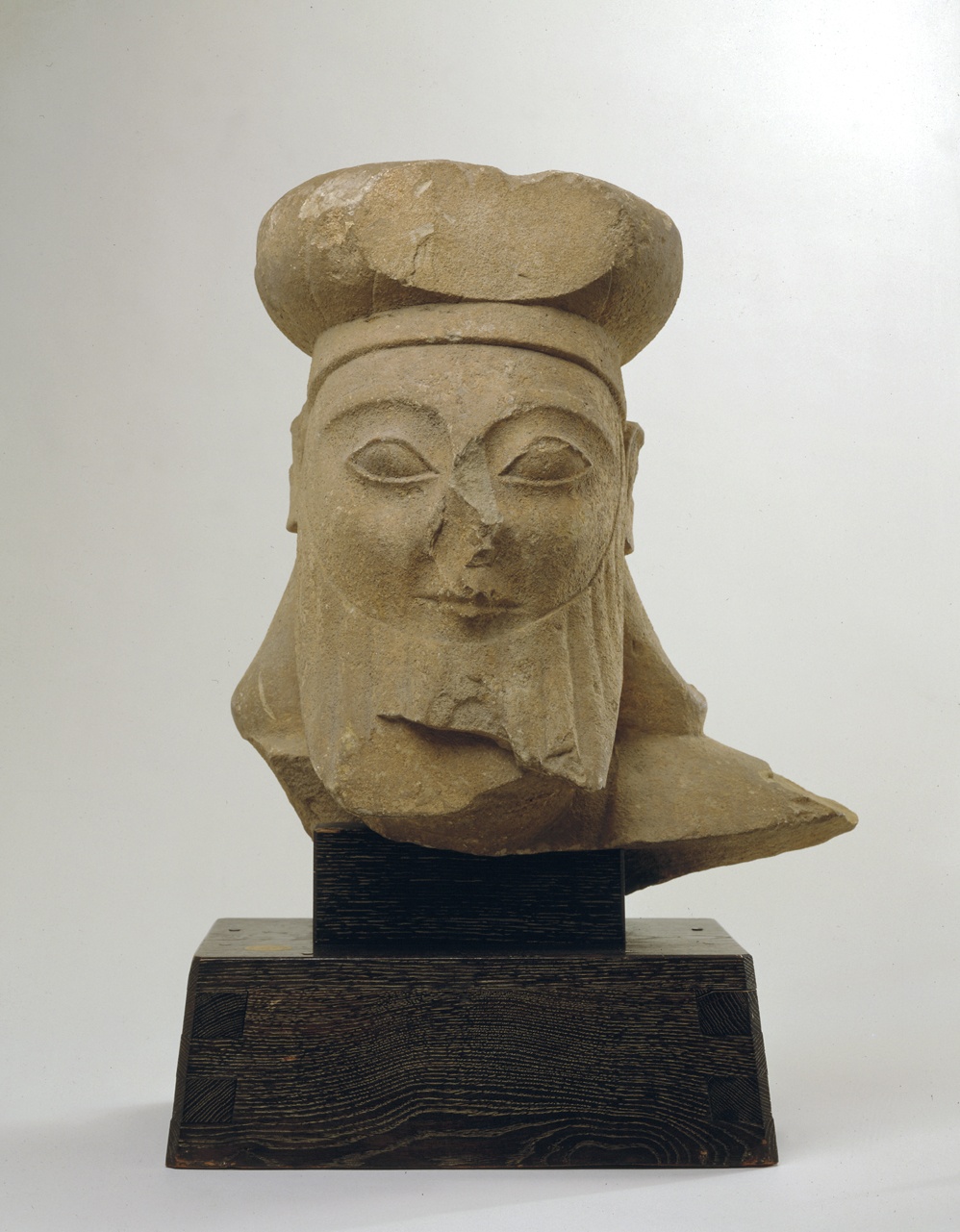
Limestone
H: 39 cm
Provenance: no indication
Cypriot
Early 6th century B.C.
Ex collection:
Armand Trampitsch
Condition: all of the lower beard and a large slice of the turban/bonnet in front missing. Most of the nose broken off. The surface relatively smooth, notwithstanding minor abrasions and chips. Once part of an over life-size statue, a section of the upper left chest and a small part of the shoulder still attached.
Larger than life-size, this head belongs to the early group of bearded male figures; probably from Eastern Cyprus. He wears an Oriental turban/bonnet [1+2].
The head is sober and very eastern. It predates Ionian Greek influence characterized by a smiling expression, when the different parts of the face blend more softly into one another. A. Hermary considers the head an important document within Cypriot sculpture, he concurs with our dating, adding that for the time being it is to be considered as head of a series.
There is an interesting comparison with a male head, likewise from a statue, in Vienna [3]. We have no really satisfying parallel [4], though several of the traits of our head are comparable to others for the arch of the eyebrows, the shape of the eyes, the pinched mouth, the beard, etc. not to mention the bonnet.
On deposit: Musée d'Art et d'Histoire, Geneva: 1968-1976
Exhibited:
Chypre des origines au Moyen-Age, Geneva 1975
Mentioned:
Cerati, C.: Mistero della scultura etrusca, Arte Figurativa, January-February 1957, no. 1, pp. 26-27 (with erroneous indications).
1 Herodotus VII, 90: "... the Cyprians ..., their princes wore turbans wrapped round their heads; ...". A headgear still in use throughout the Near East.
2 We sent this entry to Antoine Hermary asking for comparisons and a critical assessment, he kindly replied 30 June 1992: "Je pense, comme vous, que ce type de coiffure désigne probablement les personnages comme des rois ou des princes locaux. On note qu'une statuette découverte dans le dépôt de Kazaphani (région de Kyrenia) montre un homme coiffé de la sorte qui tient dans sa main un grand couteau, comme un sacrificateur: V. Karageorghis, Report of the Department of Antiquities, Cyprus 1978, p. 184. pl. 23,58. On sait qu'à Chypre les rois faisient aussi fonction de prêtres."
3 Kunsthistorisches Museum I.20. (unpublished).
4 Antoine Hermary mentions as parallels two heads from the sanctuary of Apollo at Idalion: Pryce, F.N.: Catalogue of Sculpture in the British Museum, Vol. I, Part 2: Cypriote and Etruscan (London, 1931), nos. 77-78, p. 38, and a head from Golgoi in the Louvre: Hermary, A.: Antiquités de Chypre, Sculpture (Paris, 1989) no. 529, p. 260. We had not compared these, though aware of them, for they have a fringe of hair (a row of spiral curls or dentil locks), whereas here the turban/bonnet ends in a tight-fitting band across the forehead; also their date is around 540-530, some half a century later.